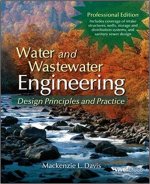Shocking: America’s Crumbling Water Infrastructure
As prospects fade for bipartisan infrastructure legislation, a new report highlights the dire consequences to public health and safety that will result from continued deterioration of the nation’s underground water networks.
Beset by over 300,000 water main breaks each year, America’s underground water pipes are showing the effects of age and chronic corrosion. “The signs of distress surface daily as water mains break causing floods and service disruptions,” the study notes. “The loss of service is more than an inconvenience, causing significant economic and social disruptions.”
The report, “Water Main Breaks in the USA and Canada: A Comprehensive Study,” was authored by Dr. Steven Folkman of Utah State University. Folkman is an internationally-recognized expert in underground infrastructure testing of analysis. Utah State says the study has been downloaded in more than 70 countries.
Using water main breaks as the most objective measure of underground pipe failures, the study reviewed data submitted by 308 water utilities in the U.S. and Canada, serving over 52 million people with nearly 200,000 miles of pipes. In determining the performance and longevity of life-sustaining water pipes, the study focused on the four leading pipe materials still in service: cast iron and asbestos cement (both of which are no longer manufactured in North America) as well as polyvinyl chloride and ductile iron.
Corrosion is by far the biggest threat to underground water distribution systems, with most municipalities having a corrosion risk rating of moderate to high. It is a small wonder that between 2012, when the last Utah State report was issued, and 2018, water main breaks increased by 27 percent. According to the study, cast iron pipe, 92 percent of which is over 50 years old, in highly corrosive soil has over 20 times the break rate as one in a low-corrosion environment. Similarly, ductile iron pipe in a high-corrosion soil has over ten times the break rate as the same pipe in a low-corrosion soil. Of the pipes tested, only PVC pipe is not subject to corrosion.
. . .
The seriousness of the corrosion problem was underscored in a July 19 report by the Environmental Protection Agency’s inspector general on the government’s inadequate response to the 2015 lead-contamination crisis involving Flint, Mich.’s drinking water. It found that failure by state officials to treat water with anti-corrosion chemicals allowed rust, iron, and lead to leach into Flint’s aging iron pipes and wind up in residents’ homes, exposing thousands of children to dangerous levels of lead.A key finding of the study is that smaller municipal utilities are in even more dire straits, with twice the level of water main breaks as their larger counterparts. “With less revenues and resources, smaller municipalities will need to use the most cost-effective and durable pipe materials available to address pipe renewal and rehabilitation projects,” Folkman says in the press release accompanying the report.
Meanwhile, water bills are surging nationwide as utilities try to replace or repair corroded metallic pipes and overflowing sewer systems. Citing figures from the U.S. Labor Department, the Wall Street Journal on March 16 reported that in the past decade, consumers have seen their water bills rise 5.5 percent a year, more than three times the rate of inflation.
. . .
Instead of restricting people’s access to water, cash-strapped municipalities should follow the recommendations contained in a timely report by the Brookings Institution. It notes that many jurisdictions’ efforts to upgrade their underground water pipes are hampered by outdated procurement specifications that exclude more cost-effective and innovative technologies. Infrastructure bids for underground pipes, for example, should allow for financial comparisons between different materials, including life-cycle analysis of both construction and maintenance.
“US drinking water supply is at risk from deteriorating pipes,” by Bonner Cohen, Washington Times, September 22, 2018
Water markets and ethics
“Water Main Break Rates In the USA and Canada: A Comprehensive Study,” by Steven Folkman, Utah State University, March 1, 2018 (49-page PDF![]() )
)
Engineers Give U.S. Infrastructure Near Flunking Grade
The U.S. Congress banned the use of lead water pipes 30 years ago, but the rule applies only to new water pipes. Millions of older ones remain in use. One possible solution is to dig up and replace these lead pipes, as has occurred between 2001 and 2011 in Madison, Wis. But doing so is costly, and not all cities have the financial means to do it. Other solutions include adding more or different chemicals to the source water and to continuously test for contaminants. The problem is not easy to solve but at least the Flint water crisis has raised awareness of the issue, and it may lead to safer drinking water throughout the United States in the future.
“Not Just in Flint Water,” by Adrian Dingle, American Chemical Society ChemMatters, December 2016
American Water Works CEO Says Water Infrastructure Needs $1 Trillion Investment
America’s population is expected to grow by 100 million—a 30-percent increase—by the middle of the 21st century. This growth will put enormous strains on the nation’s infrastructure, including roads, bridges, tunnels, and air-traffic control systems. Yet the transportation system is only the most visible of the infrastructure challenges we face. Out of sight, if not completely out of mind, are America’s vast underground water networks, many of which have reached a state of deterioration that exceeds that of the transportation infrastructure above ground. Over the next 20 years, upgrading the nation’s water and wastewater systems is expected to cost between $3 and $5 trillion. Building and replacing water and sewage lines alone will cost some $660 billion to $1.1 trillion over the same time period.
“Fixing America’s Crumbling Underground Water Infrastructure: Competitive Bidding Offers a Way Out,” by Bonner R. Cohen, CEI, April 11, 2012
CEI Hill Briefing: Fixing America’s Crumbling Infrastructure
[A]s much as half of the water pipes laid in America’s burgeoning metropolitan areas during the early 20th century were made of lead.
. . .
The Clean Water Drinking Act, along with environmental and health officials, did encourage gradual replacement of lead pipes with nontoxic materials such as PVC. But municipalities mainly turned to a chemical fix to lower lead levels, namely anti-leaching agents. Cheaper and faster-acting, these substances could largely prevent lead from entering the water from pipes, soldering and when the source of drinking water changed.
. . .
An estimated three to six million miles of lead pipes across our country still carry water, and most all of them are vulnerable to similar dangers, whether at the hands of short-sighted and prejudicial bureaucrats or politicians whose ideology or opportunism leads them to blithely dismiss well-established science.The best solution would be to replace our lead lines systematically and proactively, not just one crisis-beset city at a time. Until we do so, it’s a safe bet that more Flints lie on our horizon.
“Piping As Poison: The Flint Water Crisis And America’s Toxic Infrastructure,” by Chris Sellers, The Conversation, January 25, 2016
Here’s who will pay to fix America’s crumbling infrastructure
In general, the water industry plans, builds, operates, maintains, and replaces the typically large and expensive assets that provide water services including potable water, wastewater, stormwater, and reuse. System stewardship is how water and wastewater systems are operated, maintained, and replaced.
Viewing system stewardship from the more traditional view of asset and financial management, specific issues identified regularly through the SOTWI surveys include renewing and replacing aging infrastructure, financing for capital improvements, and cost recovery (i.e., pricing water to accurately reflect its true cost). These issues continue to be important because many water and wastewater systems built and financed by previous generations are approaching or have exceeded their useful lives and are now facing R&R. Water system R&R can be challenging even for well-performing utilities because of capital funding restraints and limited public support for these efforts (AWWA 2012).
AWWA holds that the public can best be provided water services by self-sustaining enterprises that are adequately financed with rates and charges based on sound accounting, engineering, financial, and economic principles. Revenues from service charges, user rates, and capital charges (e.g., impact fees, system development charges) should be sufficient to enable utilities to provide for the full cost of service, including the following:
• annual operation and maintenance expenses
• capital costs (e.g., debt service, other capital outlays)
• adequate working capital and required reserves
Full-cost pricing (i.e., charging rates and fees that reflect the full cost of providing water and/or wastewater services) should include R&R costs for treatment, storage, distribution, and collection systems. Issues related to equity and affordability must also be considered as rates are adjusted.
Full-cost pricing is a utility-specific issue defined by the specific community a utility services, so to explore the issue at this level, utility personnel were asked the following questions. Responses are provided in Figure 2.
• Is your utility currently able to cover the full cost of providing service(s), including infrastructure renewal and replacement and expansion needs, through customer rates and fees?
• Given your utility’s future infrastructure needs for renewal and replacement and expansion, do you think your utility will be able to meet the full cost of providing service(s) through customer rates and fees?
“2018 State of the Water Industry,” American Water Works Association (AWWA) (Page 11) (50-page PDF![]() ).
).
The Water Resources Reform and Development Act of 2014 (Pub. L. 113-121, June 10, 2014, 128 Stat. 1193), Sec. 5026, provides that projects eligible for assistance include:
(5) A project for repair, rehabilitation, or replacement of a treatment works, community water system, or aging water distribution or waste collection facility (including a facility that serves a population or community of an Indian reservation).
The average monthly water bill for a household in the United States is $120, according to a recent article from PBS Newshour. But that amount could grow by 40% in just the next five years say Michigan State University researchers Elizabeth Mack and Sarah Wrase. The main culprit? Infrastructure replacement costs.
As Americans have spread out across the country, the lengths of pipe needed to service their homes and businesses have grown tremendously. Many cities can’t keep pace with the maintenance and replacement costs today. For example, Strong Towns members Michael and Jennifer Smith did an analysis on their town of Rockford, IL and found that 120 miles of pipe were overdue for replacement with a price tag of $200 million. That’s way outside the city’s budget.
“The Cascading Impacts of High Water Costs,” Strong Towns, February 8, 2017
More
- American Water Works Association (AWWA)
– State of the Water Industry - American Society of Civil Engineers (ASCE)
- Infrastructure Report Card (ASCE)
– Drinking Water
– Wastewater - “The Clean Water and Drinking Water Infrastructure Gap Analysis,” EPA-816-R-02-020, September 2002 (54-page PDF
 )
) - Drinking Water State Revolving Fund (DWSRF) – EPA
- Sustainable Water Infrastructure – EPA
- Effective Funding Frameworks for Water Infrastructure – EPA
- EPA’s 6th Drinking Water Infrastructure Needs Survey and Assessment, March 2018, EPA 816-K-17-002
- Spending on Infrastructure and Investment – CBO
- Public Spending on Transportation and Water Infrastructure, 1956 to 2014 – CBO
- EWG’s Tap Water Database – Enter Your Zipcode (Since 2010, water utilities’ testing has found pollutants in Americans’ tap water, according to an EWG drinking water quality analysis of 30 million state water records.)
- “National trends in drinking water quality violations,” by Maura Allaire, Haowei Wu, and Upmanu Lall, PNAS, February 27, 2018
- “Millions of Americans Are Drinking Contaminated Water—and Don’t Even Know It,” by Nathalie Baptiste, Mother Jones, May 3, 2017
- “What’s in Your Drinking Water?” by Amanda MacMillan, NRDC, May 2, 2017
- “Threats on Tap: Widespread Violations Highlight Need for Investment in Water Infrastructure and Protections,” by Kristi Pullen Fedinick & Mae Wu & Erik D. Olson, NRDC, May 2, 2017
- “Infrastructure words of wisdom,” by Tyler Cowen, Marginal Revolution, May 29, 2017
- “Report: U.S. Water Systems, Deteriorated and Slow to Change, Need New Strategy – And Money,” by Brett Walton, Circle of Blue, October 15, 2014
- “New research helps ID weak water mains before they burst,” by Nick Reid and Sunanda Creagh, The Conversation, October 1, 2013
- “The Lead Industry and Lead Water Pipes ‘A Modest Campaign’,” by Richard Rabin, Am J Public Health. 2008 Sep; 98(9): 1584–1592. doi: 10.2105/AJPH.2007.113555, PMCID: PMC2509614
- Michigan’s 21st Century Infrastructure Commission
- “Pittsburgh Water and Sewer Authority (PWSA) Infrastructure Problems are Getting Worse,” Allegheny Institute, March 22, 2017
- Infrastructure Modernization: Strengthening Ohio’s Water/Sewer infrastructure, Greater Ohio Policy Center
Tackling the ‘Water Problem’: U.S. water infrastructure and regulatory reform
- “America’s infrastructure is crumbling, but a pipe-crawling robot could help,” by Lauren Thomas, CNBC, March 9, 2017
- “Water and Midwest Strategic Thinking,” by Aaron Renn, Urbanophile, August 25, 2017
- “How to Rebuild America’s Infrastructure,” by Aaron Renn, Urbanophile, June 8, 2017
- “America has a water crisis no one is talking about,” by Sarah Frostenson, VOX, March 22, 2018
- “Millions of Americans drink potentially unsafe tap water. How does your county stack up?” by Katie Langin, Science, February 12, 2018
- “Water Infrastructure Needs and Investment: Review and Analysis of Key Issues,” CRS Report RL31116 (49-page PDF
 )
) - “Drinking Water State Revolving Fund (DWSRF): Overview, Issues, and Legislation,” CRS Report R45304 (29-page PDF
 )
) - “Water Infrastructure Financing: The Water Infrastructure Finance and Innovation Act (WIFIA) Program,” CRS Report R43315 (19-page PDF
 )
) - “Legislative Options in the 114th Congress for Financing Water Infrastructure,” CRS Report R42467 (29-page PDF
 )
) - “Water Infrastructure Financing: History of EPA Appropriations,” CRS Report 96-647 (47-page PDF
 )
) - “EPA Policies Concerning Integrated Planning and Affordability of Water Infrastructure,” CRS Report R44223 (16-page PDF
 )
) - “Green Infrastructure and Issues in Managing Urban Stormwater,” CRS Report R43131 (26-page PDF
 )
) - “Federally Supported Water Supply and Wastewater Treatment Programs,” CRS Report RL30478 (47-page PDF
 )
) - “Wastewater Infrastructure: Overview, Funding, and Legislative Developments,” CRS Report R44963 (17-page PDF
 )
) - “Connecting Constituents with Federal Programs for Drinking Water and Wastewater Infrastructure Projects,” CRS Report In Focus IF11911 (5-page PDF
 )
)
|
Ensuring Safe Drinking Water: Learning from Frontline Experience with Contamination |
The Works: Anatomy of a City |
Water and Wastewater Engineering |
City Water, City Life: Water and the Infrastructure of Ideas in Urbanizing Philadelphia, Boston, and Chicago |
Courses
- Congressional Operations Briefing – Capitol Hill Workshop
- Drafting Federal Legislation and Amendments
- Writing for Government and Business: Critical Thinking and Writing
- Custom Training
- Congressional Operations Poster, with Federal Budget Process Flowchart
- Federal Budgeting, a Five-Course series on CD
- Congress, the Legislative Process, and the Fundamentals of Lawmaking Series, a Nine-Course series on CD
Publications

The Federal Budget Process 2E |

Pocket Constitution |

Citizen’s Handbook to Influencing Elected Officials: A Guide for Citizen Lobbyists and Grassroots Advocates |

Congressional Procedure |
CongressionalGlossary.com, from TheCapitol.Net
For more than 40 years, TheCapitol.Net and its predecessor, Congressional Quarterly Executive Conferences, have been teaching professionals from government, military, business, and NGOs about the dynamics and operations of the legislative and executive branches and how to work with them.
Our custom on-site and online training, publications, and audio courses include congressional operations, legislative and budget process, communication and advocacy, media and public relations, testifying before Congress, research skills, legislative drafting, critical thinking and writing, and more.
TheCapitol.Net is on the GSA Schedule, MAS, for custom on-site and online training. GSA Contract GS02F0192X
TheCapitol.Net is now owned by the Sunwater Institute.
Teaching how Washington and Congress work ™





